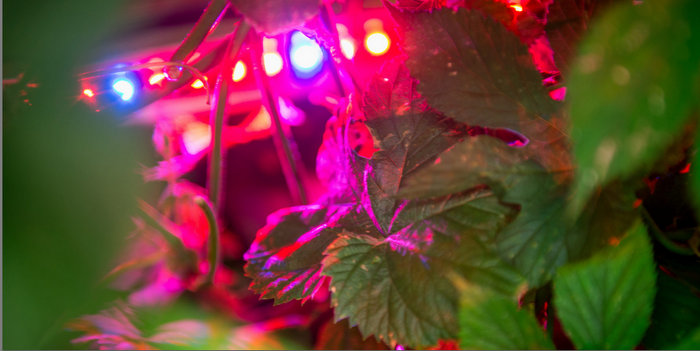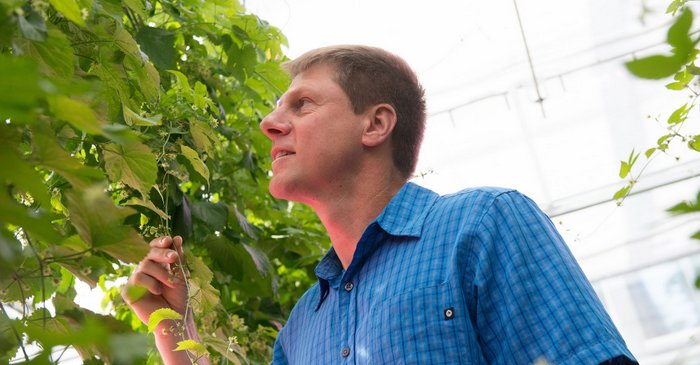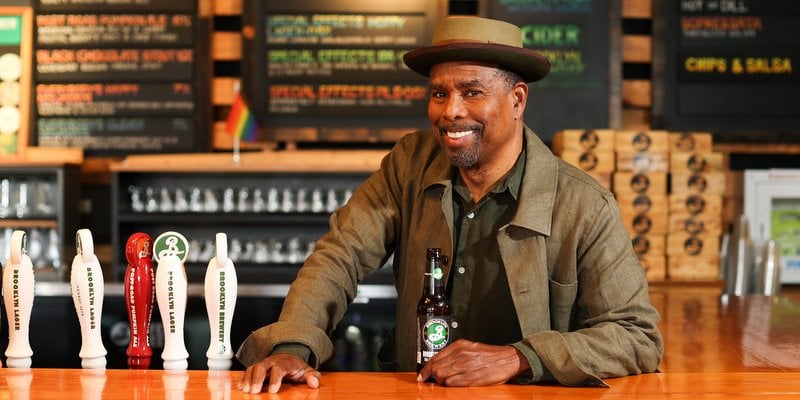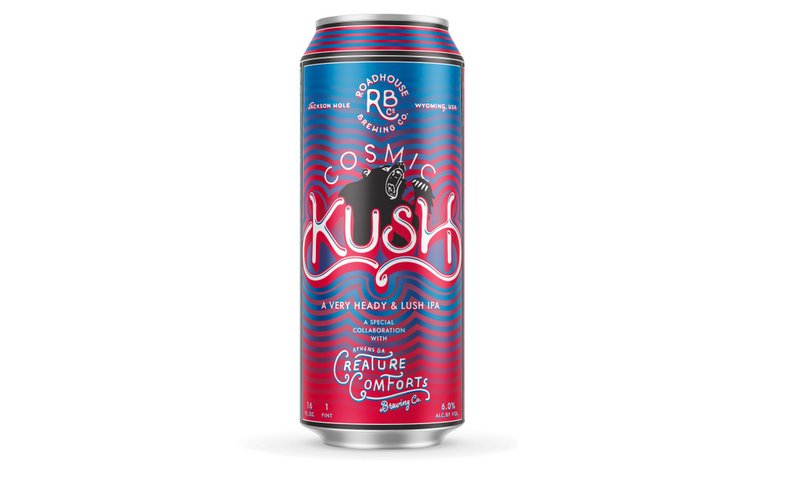
This was re-published with permission from Colorado State University. Go visit them here, and then enroll in some classes.
The explosion of craft brewing across the globe has created an insatiable demand for hops — the fragrant green flowers that impart beers with those distinctive, crisp, bitter flavors. Colorado State University plant scientist Bill Bauerle, who enjoys a hoppy brew as much as the next person, has dedicated several years to optimizing hops grown in CSU’s horticultural research center.
In a study that wraps up three years and 13 growth cycles of several popular hop varieties, Bauerle is upending conventional wisdom hop growers have followed for decades to coax their plants to flower. His results, published in Scientific Reports, open up new possibilities for indoor, sustainable, local production of hops.
Bauerle, a plant stress physiology expert and professor in the Department of Horticulture and Landscape Architecture, set out four years ago to grow hydroponic hops using the pink-hued, state-of-the-art LED lighting systems at the CSU Horticulture Center. The lights are part of a long-term collaborative partnership with Philips Lighting that allows the university to lead innovative research and teaching in horticulture and floriculture.
The Philips Lighting-enabled research space let Bauerle conduct an ambitious experiment in which he cultivated and harvested four hop cycles in a year, as opposed to just one in typical outdoor field conditions. Bauerle used the LED lights to speed up production while also bathing his plants in assigned “photoperiods” — the daily duration of light that the plants harvest for energy.
“We fooled our hops into thinking it was the middle of summer in British Columbia or somewhere else with an appropriate day length,” Bauerle said, “so we could grow them all year round.”
No rest needed

Hops, which are flowering bines that climb the iconic trellises of hopyards, are almost exclusively grown outdoors and are harvested once per year. It has long been thought that the plants require a low-temperature dormancy period, called vernalization, in which the hop buds reset themselves under cold winter conditions in order to flower prolifically. Hops are also known to require relatively long periods of daylight — above 16 hours of a photoperiod, depending on the cultivar — which explains why the Pacific Northwest dominates U.S. hop production. The region is located at the ideal latitude for the light conditions hops prefer.
By precisely controlling the lighting periods of his plants, Bauerle studied the extent to which the dormancy period was indeed a necessary component for healthy hop flowers. His results indicate that hops do not, in fact, require the dormant vernalization period that was previously assumed essential.
“The problem with hops is that if you don’t let them get big enough, they won’t flower,” said Bauerle, whose hydroponically grown hops have made their way into several batches of local beers. “Up until 10 years ago, we didn’t have the technology as far as the LED lights and controlling the photoperiods like we do. Because people couldn’t get the plants to develop like they would outside, they assumed the lower flowering was because they lacked the vernalization period.”
Without the need for vernalization, hydroponic hops grown in ideal light conditions indoors could turn the hop industry on its head, opening up opportunities for local Colorado brewers to grow or buy local hops, instead of importing them from out of state.
Bauerle said his work could be foundational for an indoor hop-growing industry, which could bring new products and values to the beer space. For example, abundantly available, hydroponically grown local hops could feed the market for “wet-hopped” beers, which require fresh-picked hops used immediately. Indoor hops also could make the most of biological pest controls contrasted with conventional field-grown plants, which are susceptible to many soil-related pathogens and require heavy use of insecticides.
“People would be shocked by how much field-grown hops are sprayed,” Bauerle said.
Bauerle has turned his attention to research in other hydroponically grown, industrial crops, including hemp, which is in the same family as hops but has a fibrous, annual root system rather than a rhizome. He is hoping to conduct related experiments on the ideal photoperiods for hemp plants.
Anne Manning is a science writer and senior public relations specialist at Colorado State University.





[…] A Colorado State University Plant Scientist Has Achieved Four Hop Cycles In A Year (via Craft Brewing Business) […]